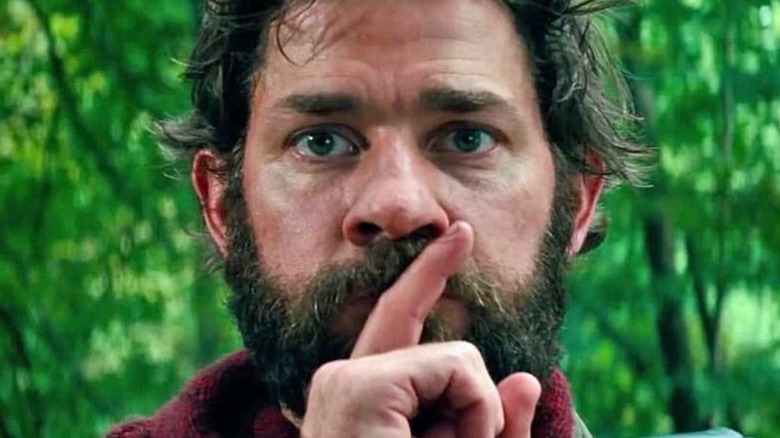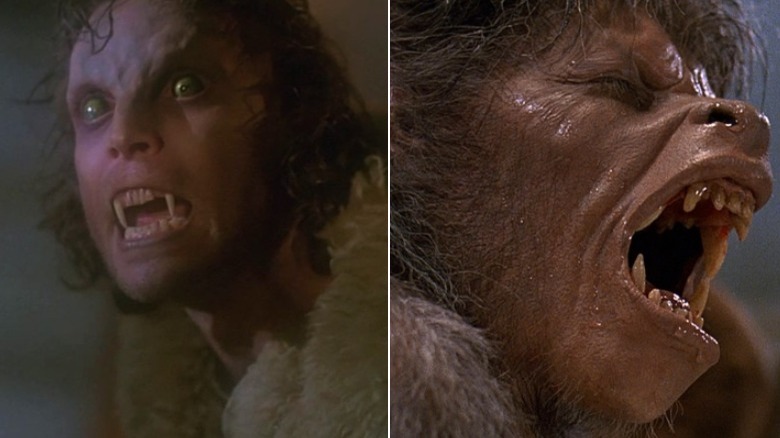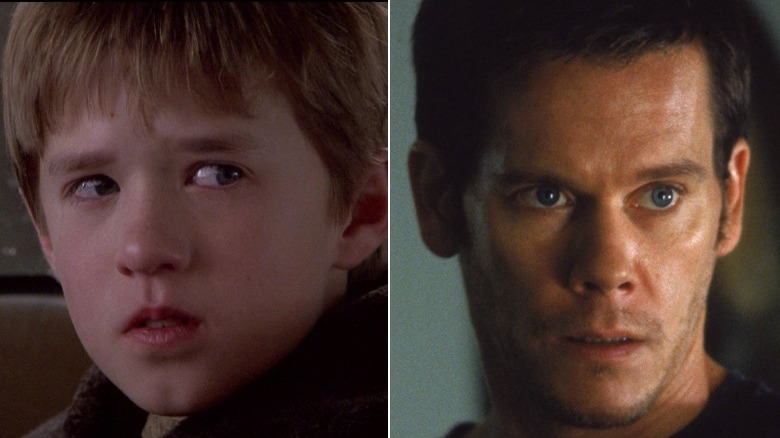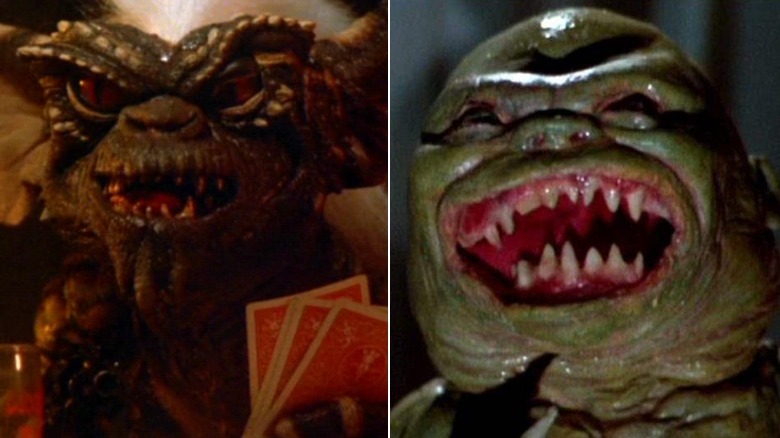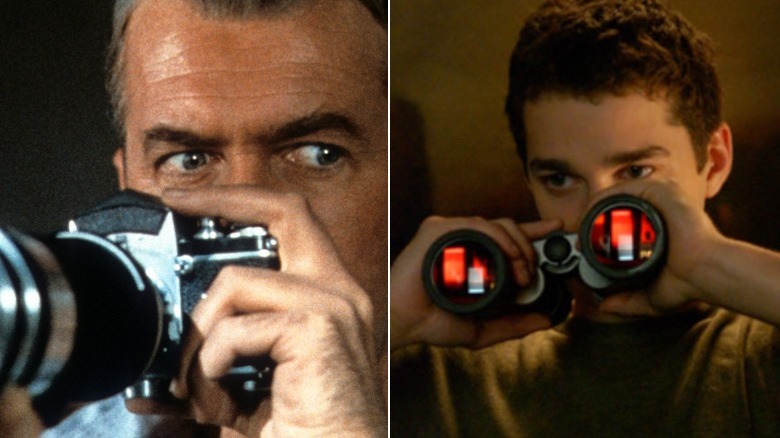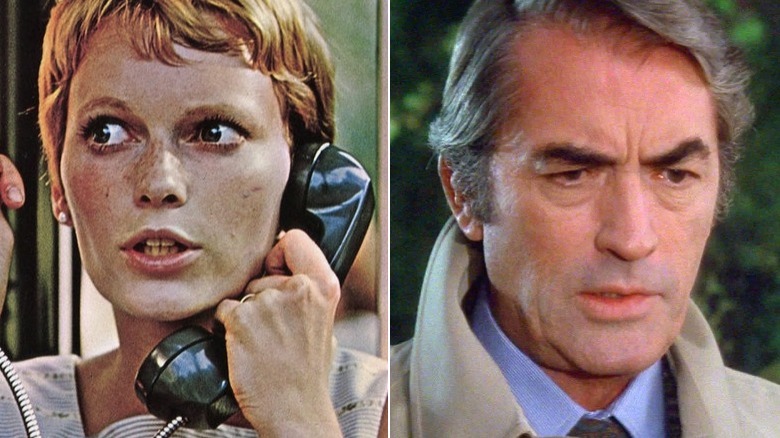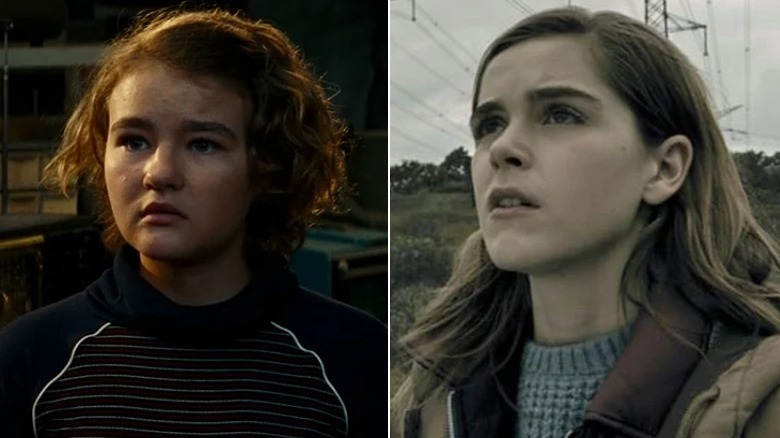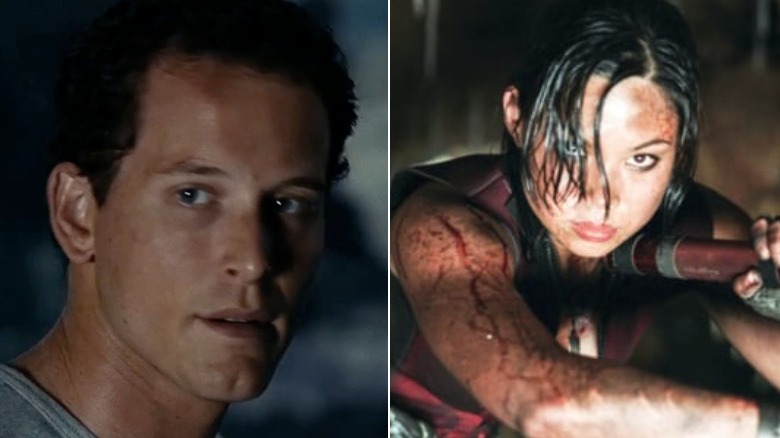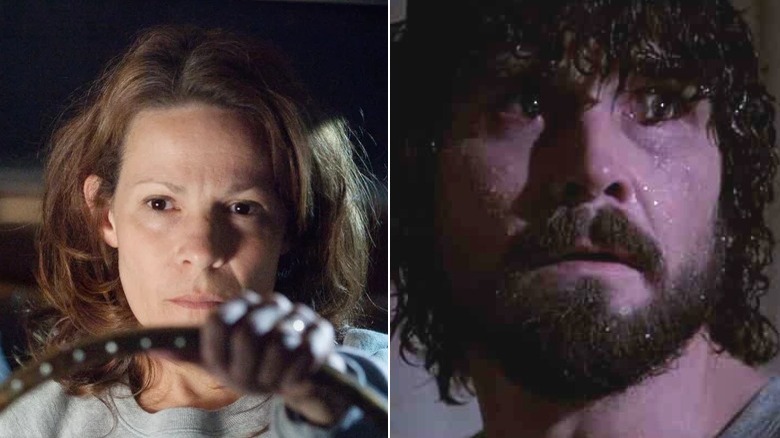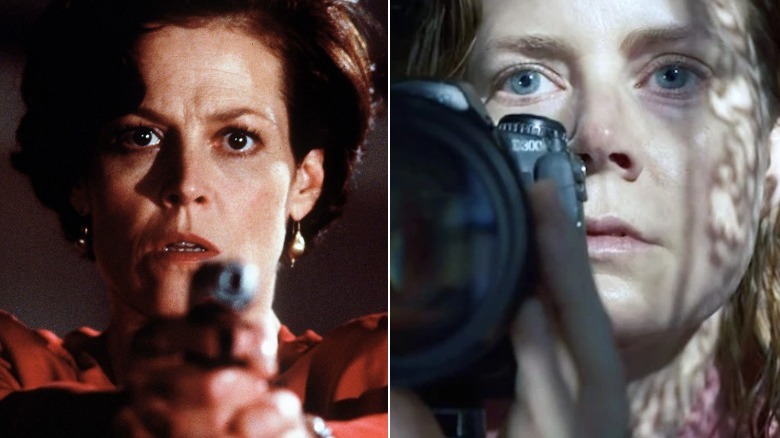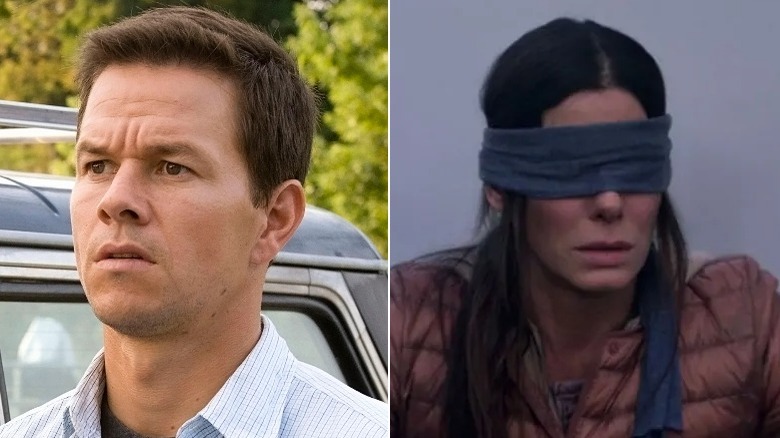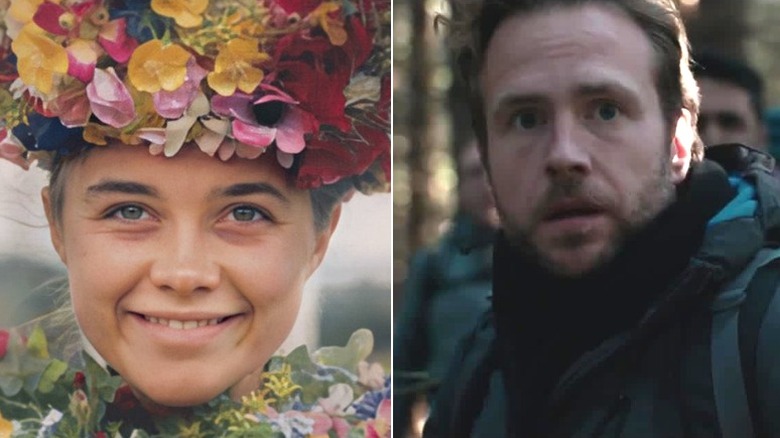Horror Movies That Basically Have The Same Plot
Have you ever watched a movie for the first time, but still felt a sense of déjà vu? On some level, it's inevitable.
Filmmaking can be a lot like music in that there are only so many variations possible for the artist. What makes the art unique, ultimately, is how the originator dresses that basic framework.
Some might argue that creative bankruptcy is a problem in the film industry, with studios simply relying on familiar intellectual property to resonate with audiences. Often times, remakes or reboots are in order to continually keep a popular movie figure in play (case in point, Spider-man).
When a movie follows the plot of another film, there can be several reasons. Perhaps, two creators had similar ideas. Or maybe, one film is an homage to the another.
Other times, films are simply spiritual siblings; horror employs suspense and tension as a hallmark of the genre, and there are only so many ways you can achieve them. When a new one emerges, it's only natural for everyone to rush in that direction.
With such matters in mind, below are some examples of horror films that didn't necessarily "rip-off" another one — but it sure does give you a sense of déjà vu.
The Howling and An American Werewolf in London
Yes, both are werewolf movies. But that's not the sole reason 1981's "The Howling" and "An American Werewolf in London" feel inseparable.
There are several pivotal moments throughout these films that run parallel to each other. Both follow average people who assaulted by a werewolf and then afflicted with the curse. They must undergo the experience of transitioning to a wolf for the first time.
Both films also deal with the harrowing reality of life as a werewolf. "London" emphasizes this living hell when the ghost of Jack Goodman (Griffin Dunne) appears to his friend, David Kessler (David Naughton), to warn him of the terrors his new state of being will invoke.
In "The Howling," Karen White (Dee Wallace) becomes determined to warn the public of the threat they face from the existence of werewolves. She makes her plight by transforming into one during a live broadcast. Both films are wrought with carnage, destruction — and conclude with their protagonists shot and killed in public.
The Sixth Sense and Stir of Echoes
Leave it to the film industry to release two similar movies a month apart. When M. Knight Shyamalan's film "The Sixth Sense" hit big screens everywhere, it became a sensation. It largely did so by positioning itself as a horror film, then shifting gears and winding up a thriller. The narrative twist is considered one of M. Knight Shyamalan's best on-screen magic tricks, and word of mouth made audiences feel like they had to see it, putting the director on the map.
But another film — one with a better pedigree — was released around the same time and devoured in its wake.
"Stir of Echoes" is based on a Richard Matheson classic, directed by one of the most successful screenwriters of all time (David Koepp, who penned "Jurassic Park" and "Spider-Man," among others) and stars Kevin Bacon.
The film cast the "Footloose" legend as a working-class guy who lives in Chicago with his pregnant wife (Kathryn Erbe). During a gathering one evening, Tom allows his sister-in-law to hypnotize him. While allegedly susceptible to hypnotic suggestion, Maggie's sister tells Tom to be more open-minded. Afterward, he begins seeing frightful visions of the dead. However, just like "The Sixth Sense," the apparition isn't necessarily harmful.
Both films feature lead characters who can converse with the dead, ultimately helping the spirits resolve their worldly issues — so, why did "Sense" gross 32 times its worldwide box office?
Gremlins and Ghoulies
In some ways, 1980s horror cinema feels like a genre unto itself. Practical effects were at the height of campy perfection, filmmakers endeavored to craft wild, horrific characters found in only the most twisted imaginations, and there wasn't a CG drop of blood to be found.
In 1984, moviegoers were introduced to Joe Dante's "Gremlins," a film populated by hideous, transforming variations of cute, cuddly creature known as mogwai. If the critter comes into contact with water and is fed after midnight, it will multiply and all the new mogwai will transform into bipedal reptilian monstrosities. Throughout the film, these creatures cause mayhem and disturb the general public.
"Ghoulies," released the following year, returned malicious frightful creatures to the big screen, albeit in a different manner.
While "Gremlins" and "Ghoulies" differ tonally and thematically (the former is more light-hearted, the latter more satanic), both collections of creatures cause mischief, mayhem, and murder on an unsuspecting population.
Rear Window and Disturbia
These two voyeuristic tales take people-watching to the next level.
In 1954, Alfred Hitchcock released his now-classic thriller about a man (Jimmy Stewart) recovering from a broken leg in his apartment. To pass the time, he begins watching his neighbors out of the rear window of his apartment, becoming increasingly suspicious of one (Raymond Burr), who seems to be up to no good. Taking note of the odd disappearance of the man's wife, he becomes determined that he has witnessed a murder, and soon ropes his girlfriend (Grace Kelly) into his paranoia.
53 years later, Shia Labeouf would play a troubled teen, reeling from the recent passing of his father. Remanded to house arrest and similarly passing the time by people watching, LaBeouf's character begins to feel there's something off about the man next door (David Morse). It's a paranoid thriller for the new century, and was one of the early films that helped make LaBeouf a star.
Before you begin defending either film, know this: before either film came Cornell Woolrich's 1942 story "It Had to Be Murder," on which "Rear Window" was based. In 2008, a lawsuit was filed against Steven Spielberg and Dreamworks, alleging that the studio had made "Disturbia" without similarly obtaining the rights. The claim was ultimately rejected, with the U.S. District Court judge Laura Taylor Swan writing: "The main plots are similar only at a high, unprotectible level of generality ... Where 'Disturbia' is rife with sub-plots, the short story has none ... The setting and mood of the short story are static and tense, whereas the setting and mood of 'Disturbia' are more dynamic and peppered with humor and teen romance."
The Omen and Rosemary's Baby
In the second half of the 20th century, the idea of satanism began to take hold as a threat to Americans, laying the groundwork for the infamous Satanic Panic of the '80s.
Such talk of satanism increasingly terrified those who are easily terrified, with reports of satanic worshipping, hellish cults, and murders linked to their activities. Of course, it didn't help that the Tate-LaBianca murders, 1973's "The Exorcist" and 1968's "Rosemary's Baby" all seemed to bleed together in the minds of some, in discomforting ways conflating fact and fiction, murder, art, pregnancies, satan and cults.
When Roman Polanski (who would marry Sharon Tate in 1968, a year before her murder) released "Rosemary's Baby," it was a huge hit. The film starred Mia Farrow and John Cassavetes as a young couple living in an upscale apartment in New York City. Featuring many cryptic, horrific moments that ultimately lead to Rosemary becoming impregnated with the son of Satan, decades later it still remains a discomforting watch.
In 1976, Richard Donner's "The Omen" was dropped into the middle of this moment, with groundwork already laid for many of its terrifying themes. Following Gregory Peck and Lee Remick as they experience a deceptive childbirth that might just lead to them possessing the son of Satan, the theme was unmistakably similar to "Rosemary's Baby," even if the latter didn't follow the child coming of age. Both films essentially tell the same story, ending on the same ominous idea: The antichrist has been born, and the world is about to be plunged into darkness.
A Quiet Place and The Silence
John Krasinski blew audiences away with 2018's "A Quiet Place," which he wrote and directed. The film features a post-apocalyptic world ravaged by otherworldly creatures who are blind, hunting and killing anything that makes a noise. Krasinski also starred in the film as the survivalist family man guiding his family in the ways of this new reality. The family's daughter is deaf, making her uniquely suited for humanity's response. It was a pulse-pounding movie, sure to give viewers a few grey hairs.
In 2019 came the Netflix film "The Silence," barely a year after Netflix's "Bird Box" had become a hit as "A Quiet Place" but with sight, not sound. "Silence" features a family caught in a post-apocalyptic world where a strange species of creatures from underground have emerged known as vesps. They viciously hunt and kill based on sound and seek the areas with the most noise for hunting. Hugh (Stanley Tucci), Kelly (Miranda Otto), and their daughter Ally Andrews (Kiernan Shipka) must focus on their own survival. Interestingly enough, Ally is also deaf. In thrillers like these, it seems, screenwriters are very quietly stealing from each other.
The Cave and The Descent
Ready for a claustrophobic adventure in the deep, dark underground? If so, then either of these two films are for you. But there's far more to be afraid of than tight spaces, darkness, and getting lost.
The 2005 Neil Marshall breakout "The Descent" depicts a group of thrill-seekers who decide to explore a strange cave system. Can you guess what they find? The creatures have long been trapped underground, so they've adapted to their pitch black environment by becoming predators that hunt by sound.
2021's "The Cave" follows explorers who attempt to investigate a cave system that has been covered for many years. Deep below the surface, they quickly learn that they've entered the domain of horrific creatures never before discovered — and the spelunkers are on the menu. During their desperate fight for survival, the remaining survivors learn that these creatures were once human, but have been transformed by an unknown parasite.
Which one did it better? If you aren't already feeling claustrophobic, take a look for yourself. They'd make a great double feature.
The Conjuring and The Amityville Horror
Ed and Lorraine Warren became household names with the cinematic depiction of their paranormal exploits in "The Conjuring." Ironically, they were involved in a myriad of other supposed supernatural investigative efforts, including the Enfield haunting and an investigation into a certain well-known haunted home in Amityville, New York. That connection aside, both "The Conjuring" and "The Amityville Horror" have strikingly similar premises.
2013's "The Conjuring" depicts the haunting of the Perron family after they move into a new home in Rhode Island. The home was once the property of a witch by the name of Bathsheba, who killed her baby in the name of the devil before cursing the plot of land and taking her own life. The Warrens reveal that the spirit haunting the Perron home is malevolent. It eventually attempts to possess the matriarch of the family, Carolyn (Lili Taylor), and force her to sacrifice her own child.
"The Amityville Horror" also deals with a home with a sinister real-life backstory of Ronnie DeFeo murdering his entire family one fateful night in 1974. Later, the Lutz family moves into the old DeFeo home and experiences paranormal phenomena. The father, George Lutz (James Brolin), slowly begins growing cold and distant. Eventually he becomes murderous, possessed by the dark forces to harm his family. So, lesson learned. Stay away from homes with macabre backgrounds.
Copycat and The Woman in the Window
Trauma often impacts people in different ways, from fixation to possible agoraphobia.
That's the case of Dr. Helen Hudson (Sigourney Weaver) in "Copycat," the would-be victim of an ex-convict. Helen's criminal psychology expertise allows her to better understand serial killers. She's then consulted by a homicide detective to help solve a recent string of murders. What she ultimately realizes is that the murders are all copycat acts of other notorious killers such as The Hillside Strangler, Jeffrey Dahmer, and Ted Bundy. Eventually the murderer begins targeting Helen, and everything the perpetrator is doing is connected to a recent lecture she gave on serial killers.
"Copycat" may not have been a hit, or even necessarily remembered by most, but nevertheless Netflix's 2021 film "The Woman In The Window" has a lot in common with its 1995 predecessor. The movie features a woman similarly agoraphobic due to past trauma, this time in the visage of Amy Adams as a child psychologist who finds herself observing her neighbors in her lonely state.
At one point, the Adams character witnesses the murder of a woman on her street. After being told by authorities that nothing happened, she becomes a bit unsure of her experiences, with her consumption of alcohol and medication perhaps clouding her cognition. Later it is revealed that, just like Sigourney Weaver's character in "Copycat," a killer is targeting Anna (Adams) and has been toying with her.
In this case, the similarities between the two films might be every bit as fishy as they feel. "The Woman in the Window" is based on a novel of the same name by A.J. Finn, which is a pen name for Dan Mallory — who endured a public relations nightmare after his book was published and details emerged that he had lied about multiple things in his personal life, as well as hiding the fact that he had lifted plot points from ... you guessed it, "Copycat."
The Happening and Bird Box
It's certainly not one of the most beloved M. Night Shyamalan films, but "The Happening" did cause a stir among avid moviegoers drawn to its haunting trailers. Leading up to the film's release, marketing efforts intrigued potential audiences with imagery of people ending their own lives en masse. Starring Mark Wahlberg and Zooey Deschanel as a couple attempting to find safety from a strange plague that causes ordinary people to fatally harm themselves, by the end of the film it has a message of nature fighting back. It's a strange film with an even stranger premise.
"Bird Box" was released on Netflix in 2018 — and as mentioned prior, it bore more than a small similarity to "A Quiet Place" — but it also seemed to share a lot of DNA with the Shyamalan film. "Bird Box" follows Sandra Bullock and her children as they seek a safe haven from an apocalyptic condition that has swept the entire globe. Something is causing people to take their own lives, which occurs once they see "it." So, in an effort to protect themselves, survivors blind themselves, employing bandanas or blindfolds to make sure they never glimpse the evil creatures. It's a harrowing film that promotes curiosity over its biggest mysteries long after the credits roll.
Midsommar and The Ritual
Both 2019's "Midsommar" and 2017's "The Ritual" are jarringly horrific films that stake their flag in the basis of grief. Both feature lead characters attempting to overcome their sorrow over the loss of a loved one. As such, they travel to foreign destinations in order to heal. But what they don't realize is that they're about to encounter a deadly community of people, much like a cult, who show them horrors beyond their wildest imaginations.
The Ari Aster-directed "Midsommar" came on the heels of 2018's "Hereditary," which received high praises for its mastery of horror. "Midsommar" set itself apart in the genre with its bright visuals and daytime settings. Its cult is harmless at first, but rears its ugly pagan head after the visitors witness horrific rituals involving death. "The Ritual," in contrast, is much darker and more haunting as a group of friends lose their way hiking through rural Sweden. A creature seemingly stalks them deep into the woods, and the cult they encounter has a sinister fate in mind for them. Interestingly, both films are rooted in Nordic history and mythology.
